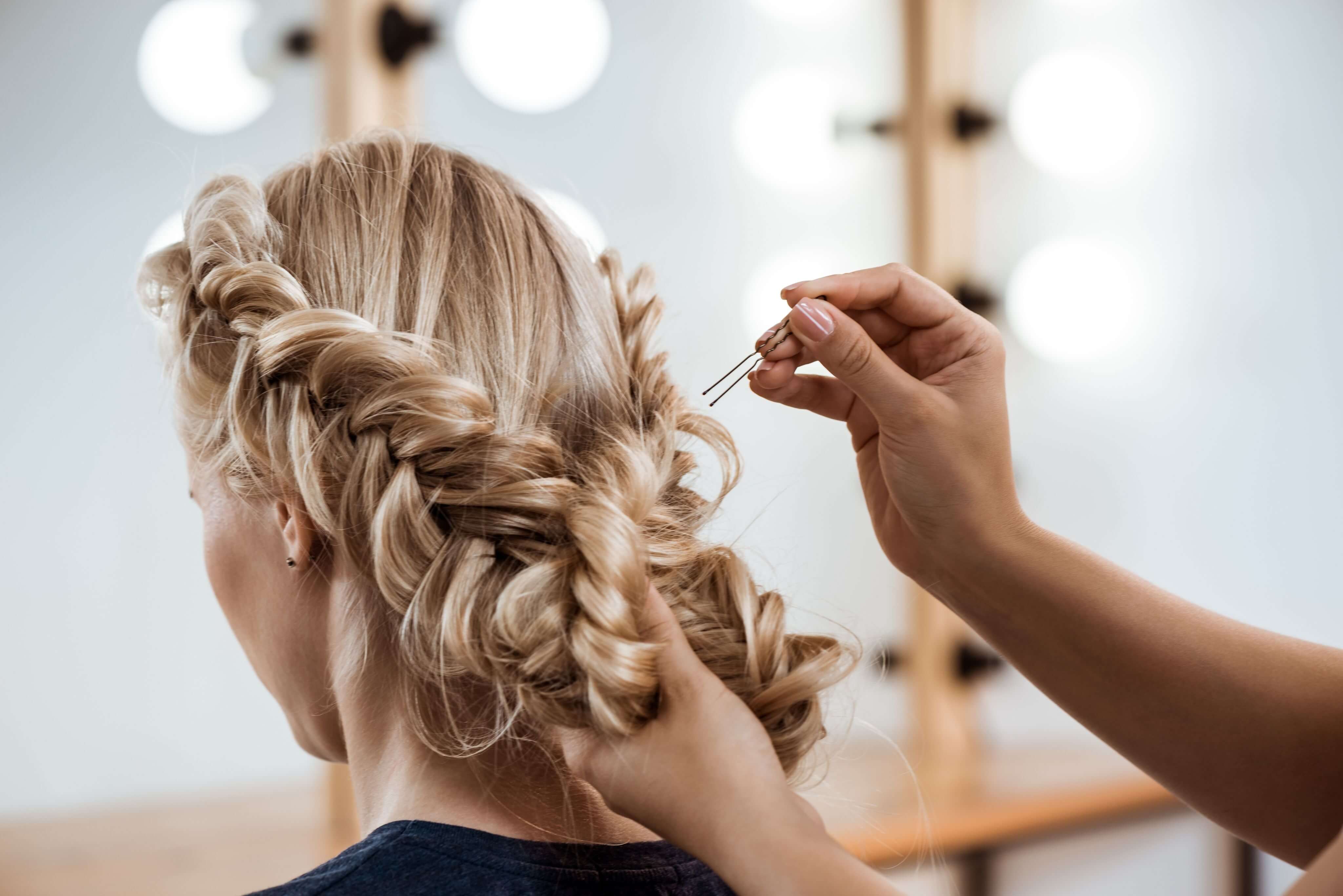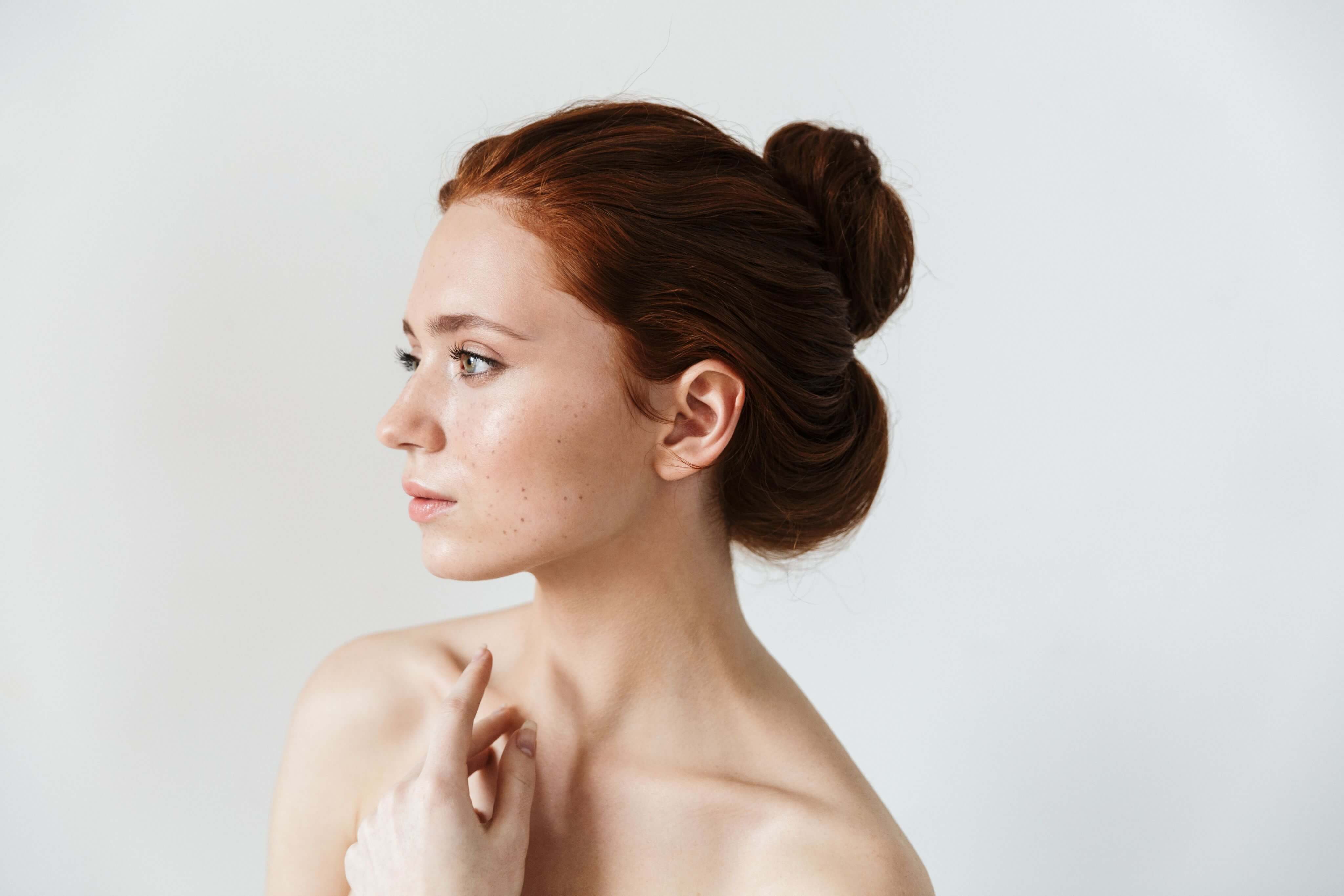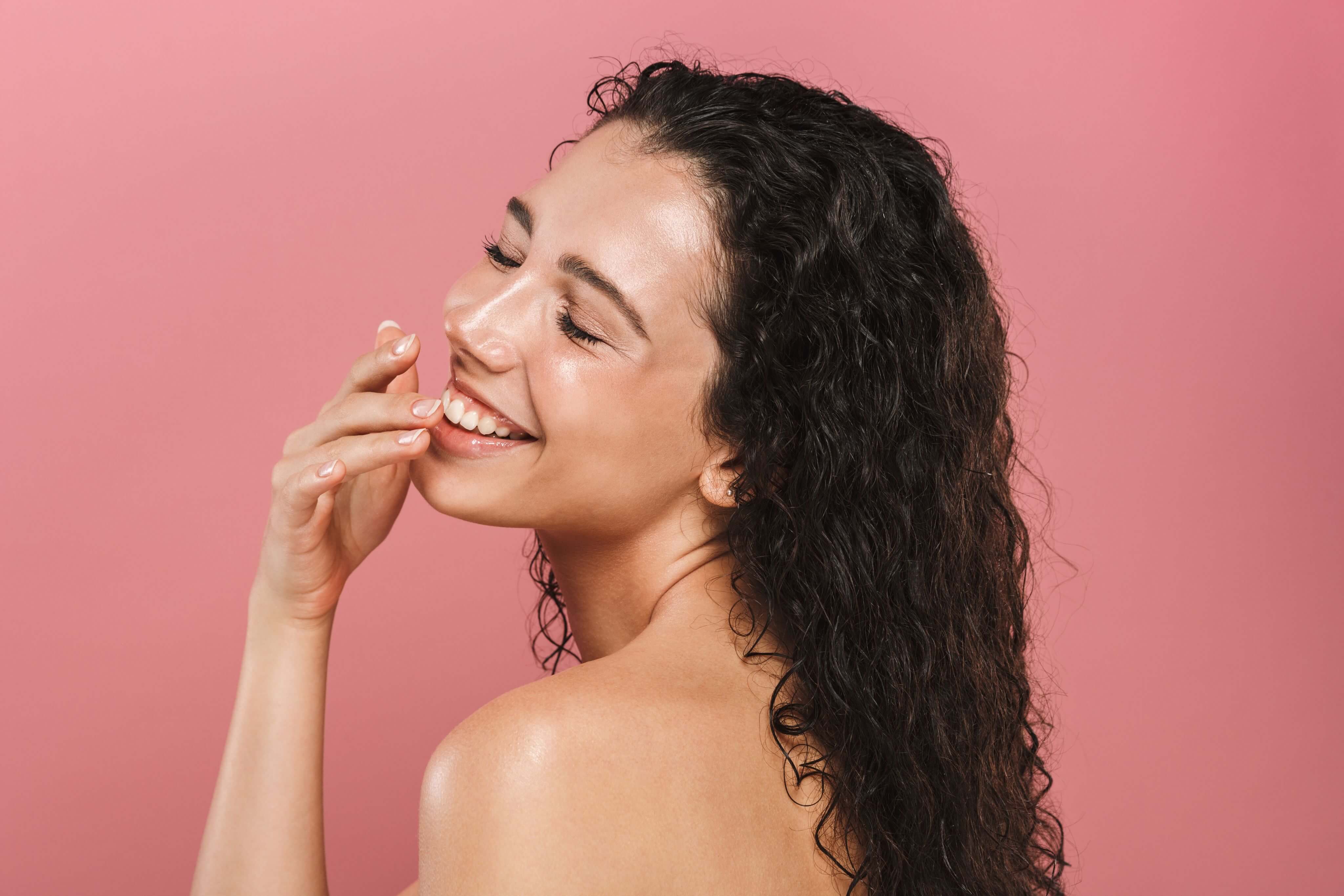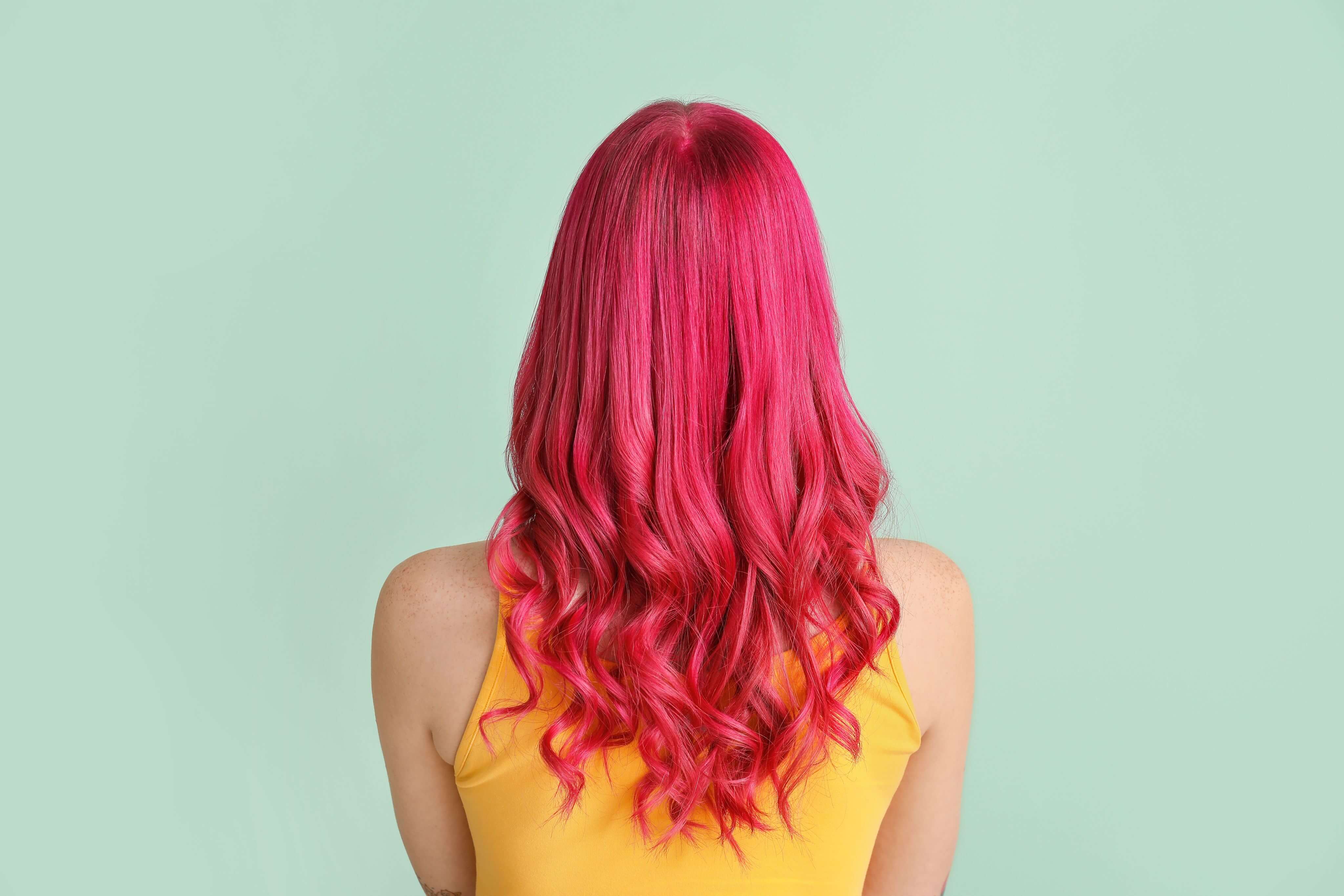
12 September 2025
How to maintain your plant-based hair colour at home?
At-home plant-based hair colouring is attracting more and more people looking for a natural alternative that is closer to their values and respectful of both the hair fibre and the environment. However, even though this natural colouring method delivers luminous and long-lasting results, it also requires great care when it comes to maintenance in order to preserve both its radiance and the overall health of the hair.Ready to take the leap? Discover today our expert tips and advice to maintain your plant-based hair colour at home and enjoy its shine for a long time.Why is maintenance crucial after a plant-based hair colour? Unlike chemical dyes, which penetrate the core of the hair through oxidation, plant-based hair colour coats the fibre and protects it by covering the hair with natural pigments derived from dye plants. This fundamental difference explains why maintenance plays such a crucial role in prolonging the effects of your plant-based hair colour. An unsuitable hair care ritual may accelerate colour fading, weaken the hair or dry out the lengths. On the contrary, adopting the right habits and a proper routine helps extend the intensity of the shades while strengthening the hair and fully benefiting from the plant-based ingredients used in your natural hair colour. The right habits to adopt from day one After applying a plant-based hair colour at home, a few simple rules and steps help fix the pigments and protect both your hair and your freshly applied colour. - Wait before the first wash: We recommend waiting at least 48 hours after application before your first wash, allowing the pigments enough time to bind durably to the hair fibre.- Choose a gentle, natural shampoo: Avoid formulas containing sulphates and silicones, which have a “stripping” effect on colour. Opt instead for organic shampoos rich in hydrating active ingredients, such as the high-nutrition shampoo from Rodolphe&Co.- Avoid rinsing with hot water: Hot water opens the hair cuticle, encouraging natural pigments to escape (as they sit on the cuticle without penetrating the core of the hair). Prefer rinsing with cool or lukewarm water to maintain the radiance of your colour.- Limit aggressive drying: Air-dry whenever possible, or use a hairdryer on a low heat setting. The first few days after a plant-based hair colour are the most important, as the colour is still developing. These small but essential steps allow the colour to anchor itself and preserve your hair’s natural shine over the long term. Which natural hair care routine should you adopt? Once the post-colouring phase (48 to 72 hours) has passed, it is time to establish a gentle and regular routine to maintain your plant-based hair colour at home. Gentle washing (2–3 times per week): Two to three shampoos per week are sufficient. Washing more frequently may accelerate colour fading. Use a gentle colour-fixing shampoo made with natural hydrating ingredients or natural molecules and technologies that seal the hair cuticles, such as the patented Keraguard® technology. Hydrating mask (1–2 times per week): Hydration is key to keeping colour-treated hair healthy. Once or twice a week, apply a hydrating and nourishing treatment to the lengths and ends. Leave on for 10 to 15 minutes under a warm towel or shower cap to enhance the penetration of active ingredients. Natural rinse: Rinsing with cold water or apple cider vinegar closes the hair cuticles, fixes the colour and adds shine. A few drops are enough for optimal results. Neutral henna (once a month): A neutral henna mask can be used to strengthen the hair, add volume and maintain the natural colour’s radiance without altering it. Bonus tip: apple cider vinegar rinse Apple cider vinegar is a valuable ally for naturally coloured hair. By slightly acidifying the hair’s pH, it helps tighten the cuticles and boost shine. Dilute two tablespoons in one litre of cold water and use this as a final rinse after shampooing, once a week. Mistakes to avoid after a plant-based hair colour Although at-home plant-based hair colouring is gentle and respectful, certain mistakes can compromise the results. Shampoos with harsh chemical compositions: formulas containing sulphates, PEGs or alcohol gradually strip away natural pigments. Silicone-based treatments: silicones create an artificial coating around the hair, preventing natural actives from penetrating and dulling the colour over time. Repeated exposure to external aggressors: UV rays and pollution oxidise pigments and dry out the hair fibre. Remember to apply a protective treatment or rinse your hair with clear water after swimming. Chemical colouring after plant-based colouring: chemical dyes can interact with natural pigments and cause unwanted tones. If you wish to change colour, consult a professional specialising in plant-based hair colouring before any new application. Maintaining your plant-based hair colour at home primarily means adopting gentle gestures and natural, chemical-free products. By respecting processing times, choosing the right treatments and avoiding chemical aggressors, you will enjoy long-lasting shine, colour hold and vitality provided by dye plants. What if you trusted your plant-based hair colouring expert?While at-home plant-based hair colouring delivers beautiful results, nothing replaces the expertise of a hairdresser trained in natural techniques. At Rodolphe&Co, our plant-based colour experts guide you in choosing the shades best suited to your complexion and hair type.You can find all our advice and products on our website, where our complete plant-based hair colouring kits are available for simple, professional application at home. These kits include everything you need: colouring powder, fixing treatment and accessories, for a sensory and hair-respectful experience inspired directly by the rituals of our salons.Thanks to this synergy between professional expertise and at-home kits, you benefit from a radiant, natural and long-lasting colour, while fully respecting the plant-based philosophy so dear to Rodolphe&Co.
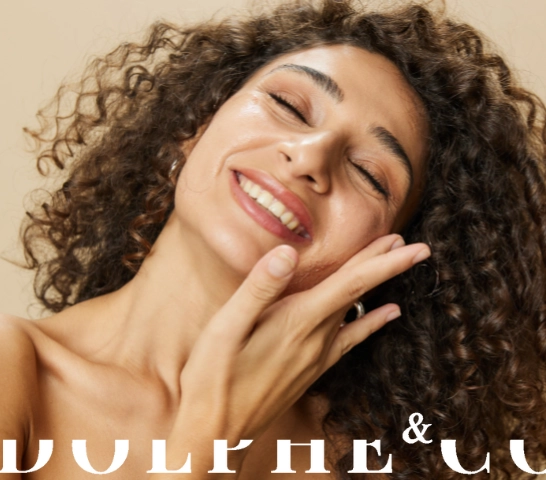
Shiny, strong, and vibrant hair — that’s a dream for many of us. You might try beauty products, treatments, and routines, yet see no lasting results. But have you ever considered looking at your plate? Our hair is a reflection of our health and well-being. A targeted, balanced diet can transform your hair from roots to ends. Today, we’re diving deep into the link between nutrition and hair health. We’ll discover the essential minerals and nutrients that serve as pillars of healthy, glowing hair and explore simple tips to adopt. Ready, set, eat! Why Does Nutrition Affect Hair Health? Hair is a complex structure, and to properly support it, we must understand its biology. Hair is mainly composed of a protein called keratin (responsible for strength and elasticity), water (which keeps it hydrated and flexible), and lipids (which protect the hair's outer layer). Hair grows in cycles — growth, rest, and shedding — and each phase requires specific nutrients to function optimally, renew, and stay strong. Many factors can disturb this delicate cycle: genetics, environment (pollution, stress, sun), and nutrition. Deficiencies are among the main causes of hair problems, leading to dullness, breakage, and even hair loss or alopecia. Key Nutrients for Healthy Hair Proteins: They are the building blocks of keratin. A deficiency leads to thinner, weaker hair and eventually hair loss. You can find protein in fish, eggs, lean meats (chicken, turkey, pork), or plant-based alternatives like lentils, beans, and tofu. Essential Vitamins Vitamin A: Encourages sebum production, which hydrates the scalp.It’s found in colorful fruits and vegetables like carrots, melons, tomatoes, apricots, and herbs like parsley. Vitamin B7/B8 (Biotin): Plays a key role in hair growth and keratin production. A deficiency weakens the hair fiber.Found in foods like eggs, avocados, and almonds. Vitamin C: Enhances iron absorption and protects hair from oxidative stress (UV rays, pollution, smoking, stress).Citrus fruits and kiwis are great sources of vitamin C. Vitamin D: Stimulates hair follicles and extends the growth phase.Produced through sun exposure, but also found in fatty fish and eggs.Minerals Iron: Vital for transporting oxygen to hair follicles. Deficiency can lead to hair loss.Rich sources: lentils, spinach, and red meat. Zinc and Selenium: Crucial for growth, keratin production, and scalp health.Found mostly in seafood.Essential Fatty Acids Omega-3 and Omega-6: They hydrate, strengthen, and add shine to hair. Found in fatty fish (salmon, tuna, mackerel), flaxseed oil, walnuts, and chia seeds.A Balanced Diet for Healthy Hair Healthy hair isn’t just about using the right products. Nutrition is a core factor in hair beauty and vitality. For strong, shiny, growing hair, your diet must be rich in essential nutrients and well balanced.The 5 Dietary Pillars for Healthy HairChoose unprocessed foodsEat a variety of fruits and vegetablesEnsure adequate protein intakeSelect whole grainsIncorporate healthy fatsSupplements: A Boost for Your Hair Your diet may not always provide every nutrient you need. That’s where supplements come in. Designed to complement your meals, they deliver concentrated doses of essential vitamins and minerals to enhance your hair’s health and beauty. They’re especially useful for:Nutrient deficiencies — even with a healthy diet, some nutrients can be hard to get.Persistent hair problems — like breakage, thinning, dullness; ingredients like keratin and biotin can help.Periods of stress or fatigue — supplements support the body and limit the impact on hair growth.Hydra-Hair: A Complete Hair Supplement Designed to support the hair, skin, and nails, Hydra-Hair includes rigorously selected ingredients:Marine collagen: Strengthens and improves hair elasticity.Amino acid complex: Supports protein synthesis and overall hair health.Natural keratin: Repairs and reinforces the hair fiber.A healthy, balanced diet is the foundation of great hair. It promotes growth, shine, and resistance. But when your hair needs a little extra “boost,” supplements can be a great ally — just be sure to consult a healthcare professional before starting any supplement.Haircare Habits to Adopt Beyond nutrition, daily habits are crucial for maintaining beautiful, healthy hair. A poor haircare routine can weaken strands and accelerate breakage. Here are some smart practices to adopt:Limit heat styling: Excessive heat damages hair. Let it air-dry when possible or use heat protection before styling.Reduce shampoo frequency: Frequent washing strips natural oils. Use a mild, natural shampoo and alternate with nourishing treatments.Hydrate and nourish regularly: Weekly hair masks or oil treatments (argan, coconut, castor) strengthen and protect hair.Brush gently: Aggressive brushing breaks hair and irritates the scalp. Use a wide-tooth comb or natural bristle brush, starting from the ends.Trim ends regularly: Even if you want to grow your hair, trimming every three months prevents split ends and keeps hair strong.Consult a hair professional: They’ll recommend cuts and care suited to your hair type while preserving its health.By combining a balanced diet with good hair habits, you give your hair the best chance to shine, stay strong, and radiate vitality!
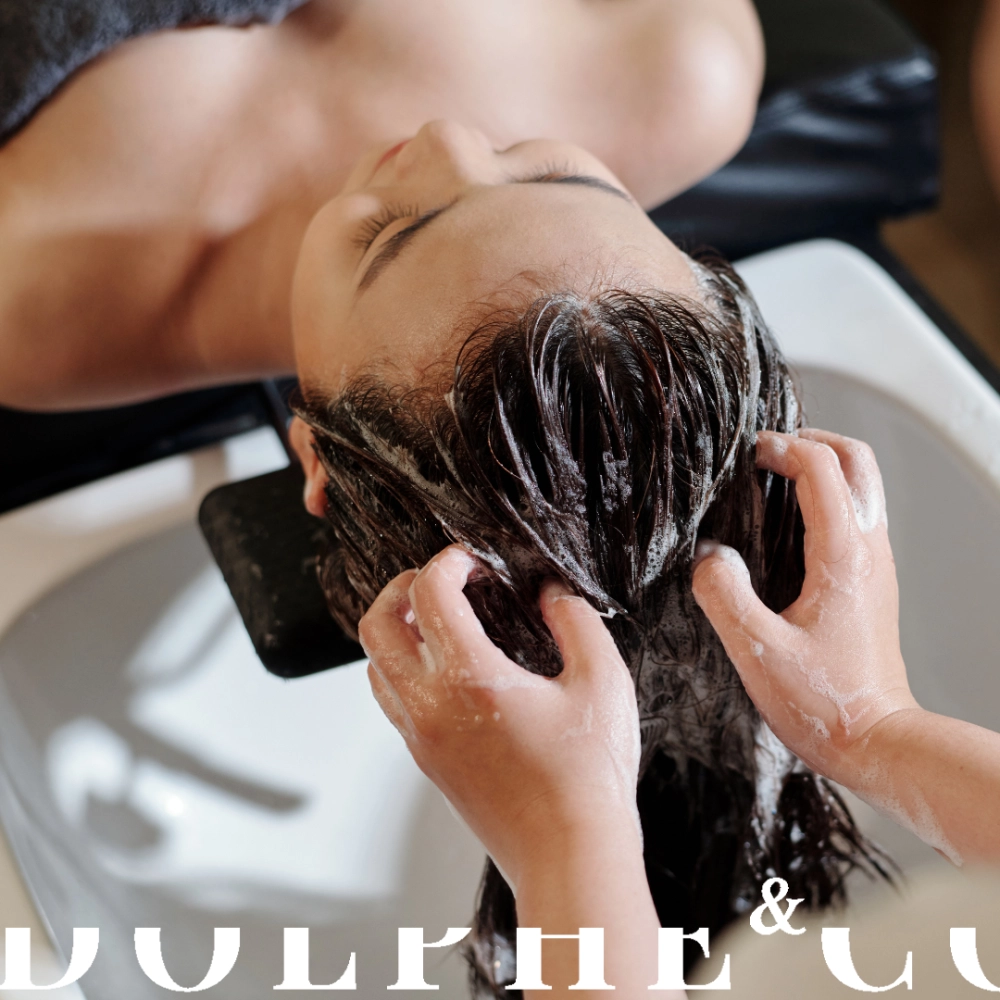
Serum, moisturizing cream, and mask—taking care of your face is a common practice. But have you ever thought about doing the same for your scalp? Yet, it's the foundation for healthy hair! Today, let’s discover a ritual inspired by Japanese traditions: the Head Spa, a true moment of relaxation and deep care for the scalp. Your Scalp Deserves as Much Attention as Your Skin! Did you know that your scalp is an extension of your facial skin? Just like it, it needs to be hydrated, protected, and cleansed to avoid various issues such as dandruff, itchiness, excess sebum, or even hair weakening! A healthy scalp is the key to strong, shiny hair. What Is Head Spa? An ancestral practice straight from Japan, Head Spa is much more than a simple treatment. It’s a true wellness ritual that combines massage, exfoliation, and hydrating care to purify the scalp and stimulate hair growth. Picture yourself lying back while an expert performs a relaxing scalp massage using natural oils and products...A pure moment of relaxation that works in depth! The Benefits of Head Spa for Your Hair Deep Detoxification and Purification Head Spa deeply removes toxins and product buildup that eventually clog hair follicles and suffocate the scalp. This purification benefits all scalp types but is especially effective for scalps prone to dandruff or irritation. Guaranteed relief! Hydration and Balance of the Scalp The use of gentle and natural ingredients such as botanical oils and plant extracts during a Head Spa provides the essential hydration needed to maintain scalp balance, preventing dryness and itchiness—without weighing down the hair. Stimulating Hair Growth Scalp massage—an essential component of Head Spa—is a true boost for blood circulation, helping to deliver nutrients to the hair follicles and stimulate growth. Combined with natural and strengthening treatments that help prevent hair loss and encourage growth, your hair will gain volume and density.So, Head Spa offers many benefits for both hair and scalp. But that’s not all—Head Spa also impacts the body, acting as a relaxing, anti-stress treatment that soothes the mind. How to Incorporate Head Spa Into Your Hair Routine To purify your scalp, it’s recommended to do a gentle exfoliation once a week. Regularly massaging the scalp with essential oils stimulates blood flow and promotes hair growth. The frequency of this type of care depends on your hair type and personal needs. A professional can advise you on the most suitable routine and techniques for your scalp. Essential Products for a Homemade Head Spa To enjoy a professional-like Head Spa at home, you’ll need a natural exfoliating product with ingredients like clay or salt. Also choose botanical and essential oils suited to your scalp type. Finally, opt for gentle, sulfate-free shampoos to avoid irritating the scalp and preserve the quality of your care. Head Spa and Emotional Well-being Head Spa doesn't just care for your hair—it also soothes the mind. Essential oils, soft music, enveloping gestures... everything is designed to release tension. This moment of self-connection acts like a timeless bubble, perfect for reducing anxiety and improving sleep quality. A treatment for the body—and the soul. Head Spa: A Beauty Secret to Embrace Now Head Spa is much more than a hair care routine. It’s a sensory experience, a moment of letting go inspired by Japanese traditions, where well-being meets long-lasting results. With gentle, natural techniques, it works deeply to rebalance, stimulate, and soothe the scalp. Adding this ritual to your beauty routine means choosing quality, care, and serenity for your hair—and for yourself.
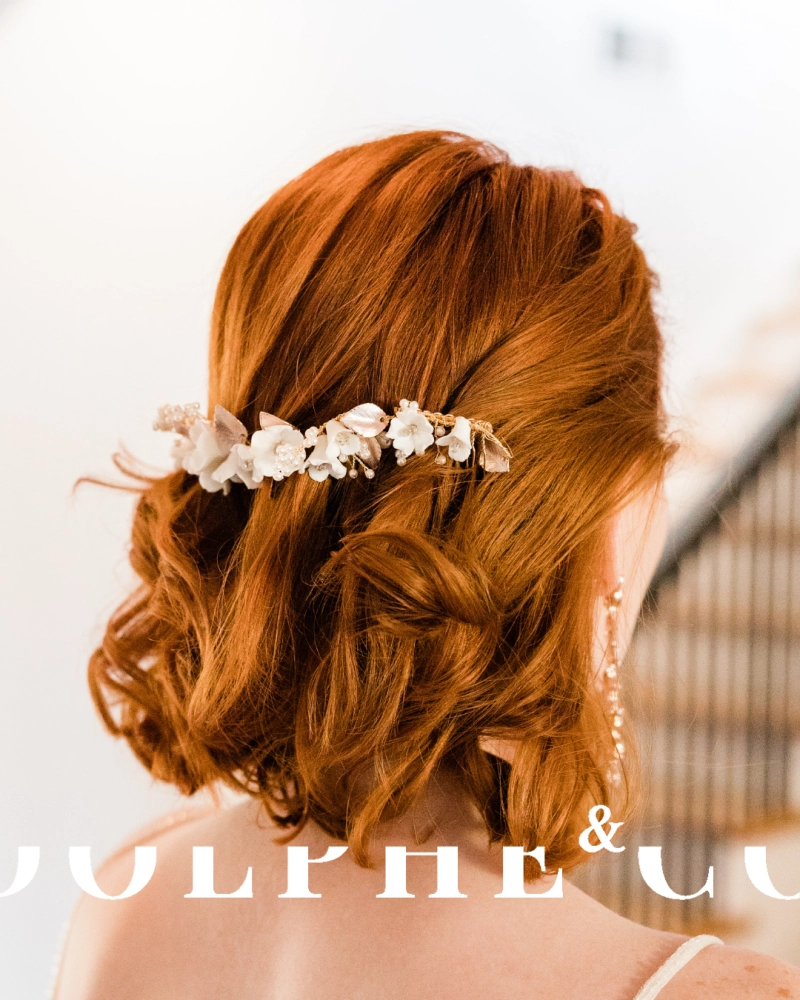
29 November 2024
10 Essential Hair Accessories to Shine During the Holidays
The holiday season is fast approaching, making it the perfect time to go all out and express your style with breathtaking hairstyles. Beyond the cut or color, it’s often the accessories that make all the difference and create those “wow” moments as you arrive. From hair clips to headbands and hairpins, here’s our top 10 must-have accessories for the 2024 holiday season. Why Are Hair Accessories Essential? Capable of transforming even the simplest hairstyle into a sophisticated look in seconds, hair accessories are often at the heart of emerging modern hairstyling trends. Offering unlimited personalization, mastering the art of accessorizing your hair allows you to enhance your style and outfit effortlessly. It’s also crucial to use a heat protectant product before styling your hair to maintain its health and minimize heat damage. Our Top 10 Must-Have Accessories for the Holiday Season Ornate Headbands Whether made of velvet, adorned with pearls, or studded with rhinestones, headbands are in style. They add a touch of elegance to simple hairstyles like low buns or wavy hair. Choose a wide model for a bold statement or a thin one for a subtle yet refined look. Oversized Accessories XXL hair clips and barrettes are all the rage this season. For an original and daring look, opt for a barrette adorned with feathers, flowers, or an oversized bow. Looking for a chic yet laid-back style? Patterned or embellished XXL hairpins are your go-to. It’s also crucial to maintain and use these tools properly to ensure their longevity and effectiveness. Colorful Hair Clips An easy way to add a playful touch to your hairstyle. Stack them on the sides or at the back for a chic bohemian effect. With a wide variety of colors and shapes, the possibilities are endless for creating unique and personalized looks. Decorative Brooches and Combs Ideal for long and thick hair, they add an extra touch of sophistication to your hairstyle. Opt for materials like metal or resin, adorned with rhinestones or pearls, for an elegant finish. It’s also essential to keep these accessories in good condition, especially in a hair salon, to ensure impeccable hygiene and quality service for clients. Bow Headbands Made of satin or velvet, bow headbands are timeless classics that return every year. Perfect for adding a sophisticated touch to simple hairstyles. Silk and Velvet Scrunchies These soft and practical accessories remain a must-have. Use them to create low buns or ponytails with retro vibes for velvet scrunchies or a more elegant look with silk ones. Tiaras The ultimate accessory for special occasions. Perfect for a chic, elegant, and princess-like look, making you the queen of the evening. Scarves Versatile and original, scarves add a unique touch to your hairstyle. Tie them in multiple ways—around a bun or woven into a braid—for a chic, bohemian vibe. Decorative Elastics Say goodbye to basic hair ties! For the holidays, opt for ones covered in shimmering fabric, glitter, or even adorned with bows. They add style to a simple ponytail or half-bun in seconds. Hair Sticks and Pins With floral or geometric designs, these accessories add a refined, sophisticated finish to updos like low buns. Hair Clips: A Small Detail That Makes a Big Difference Hair clips are the ultimate hair accessory to add a touch of style and sophistication to any hairstyle. Available in a variety of shapes, sizes, and colors, they suit all hair types and styles. Whether you want to tame flyaways, add a sleek detail to a simple hairstyle, or create a more elaborate look, hair clips are your best allies. Practical and aesthetic, they’re perfect for those busy days when you still want to shine. How to Choose the Right Hair Accessories? Choosing the right hair accessories is key to perfecting your look. Here are some factors to consider to find the ones that suit you best. Your Face Shape Select accessories that highlight your facial features. For example, thin headbands work well for round faces, while XXL barrettes complement oval faces. Your Hair Texture If you have fine hair, opt for lightweight and delicate accessories. For thick hair, go for more robust and prominent pieces. Don’t Be Afraid to Experiment While there are “rules,” hair accessories are meant to be fun and express your personality. Don’t be afraid to experiment and switch up accessories to create fresh, exciting looks. Some Holiday Hairstyle Ideas with Accessories Low Bun: A low bun paired with an XXL barrette or ornate hair comb is perfect for a chic look. Loose Waves with a Braid: Soft waves with a side braid offer a romantic and feminine option. Add a colorful hair clip or scarf for a bohemian touch. High Ponytail: A sleek, high ponytail secured with a velvet scrunchie is a timeless classic. Use a blow dryer for a polished finish, and add a bow headband for a more sophisticated look. If you’re still unsure or need more advice, check out our partner salons, where experts can help make your holiday hairstyle unforgettable.

21 August 2024
How to Take Care of Your Hair in Summer
Sunshine, swimming, and outdoor activities make summer a highly anticipated season. However, it's also a time when our hair faces challenges that can damage it, such as UV rays, chlorine, and even sea salt. It’s crucial to take care of our hair during the summer to maintain its health and beauty. Today, we will explore in detail the challenges our hair faces in summer and provide tips and tricks to protect it effectively. Discover simple and natural methods to keep your hair healthy all summer long.Understanding the Challenges of Summer for Hair The Sun : The Hidden Enemy of Our Hair Have you ever noticed that your hair feels drier and more brittle after a long day at the beach? It’s not just in your head! Sun rays, composed of UV radiation, can be very harsh on our hair. They damage its structure, dry it out, and make it more fragile. How to Protect Your Hair from the Sun Stay in the shade; a wide-brimmed hat is your best ally for protecting your hair from UV rays.Use natural products that offer UV protection to create a protective barrier around your hair.Avoid the hottest hours of the day, between 12 PM and 4 PM, when the sun is at its peak. It’s better to avoid beach or pool time during these hours. Chlorine and Salt: The Duo That Damages Our Hair After a day at the beach or pool, hair often becomes rough and difficult to manage. Chlorine in pools and sea salt both attack our hair, dehydrate it, and make it more porous. It’s like washing your hair with soap! How to Care for Your Hair Against Chlorine and Sea Salt:Wet your hair with clean water before swimming to create a barrier that limits chlorine or salt absorption.Use a leave-in conditioner or a natural shampoo, ideal for swim days, to help your hair build a natural protective layer.Rinse your hair thoroughly with clean water after each swim to remove as much chlorine or salt as possible. A Hair Care Routine Adapted to Summer Now that we understand the challenges our hair will face this summer, it’s time to find solutions! What products to use and what routine to follow to take care of your hair in summer and preserve its beauty. Intense Hydration To counteract the harmful environmental effects of summer, it’s essential to include deep hydrating treatments free from harsh chemicals in your routine. Hair masks rich in hydrating ingredients like argan oil, shea butter, or aloe vera are particularly effective. Applying natural oils to the lengths seals in moisture and nourishes the hair shaft. We recommend the High Hydration Mask paired with Botanical Oil, professional-quality natural products that will keep your hair hydrated all summer long.Effective Hair Sun ProtectionTo prevent UV rays from damaging our hair structure, it’s strongly recommended to use natural hair products containing UV filters, even if you wear a wide-brimmed hat. The Pearly Gel, a natural leave-in detangler, and Botanical Oil will be your anti-UV allies for hair care throughout the summer season. Appropriate Washing and Care It’s tempting to wash your hair more frequently during this season due to sweat and impurities. However, over-washing will only exacerbate hair dryness. It’s advisable to limit shampoos to 2-3 times a week and choose gentle, hydrating formulas like the Light Hydration Shampoo or the Volumizing Mineral Shampoo. In SummaryA summer hair care routine is built on three pillars: hydration, protection, and the use of gentle, natural products. By following these tips, you can preserve the health and beauty of your hair all season long.Additional Tips for Hair Health in Summer Taking care of your hair in summer isn’t just about having the right hair care routine. There are simple, natural tips to further protect your hair from external aggressions. For example, hairstyles like braids, buns, or low ponytails reduce friction, breakage, and dehydration. They also help protect the ends, which are often more fragile in summer. Hydration and diet also play a significant role in hair health. A balanced diet rich in vitamins, minerals, and proteins, coupled with adequate water intake during the summer, promotes hair growth and strength.You are now ready to face summer and all its challenges!

No more result
No more result

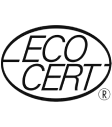
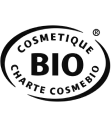


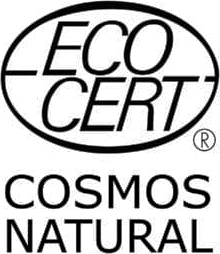
.png)

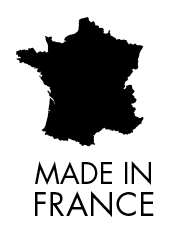
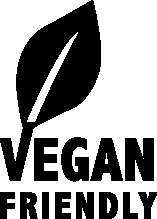

 (9).png)

Learn
together
